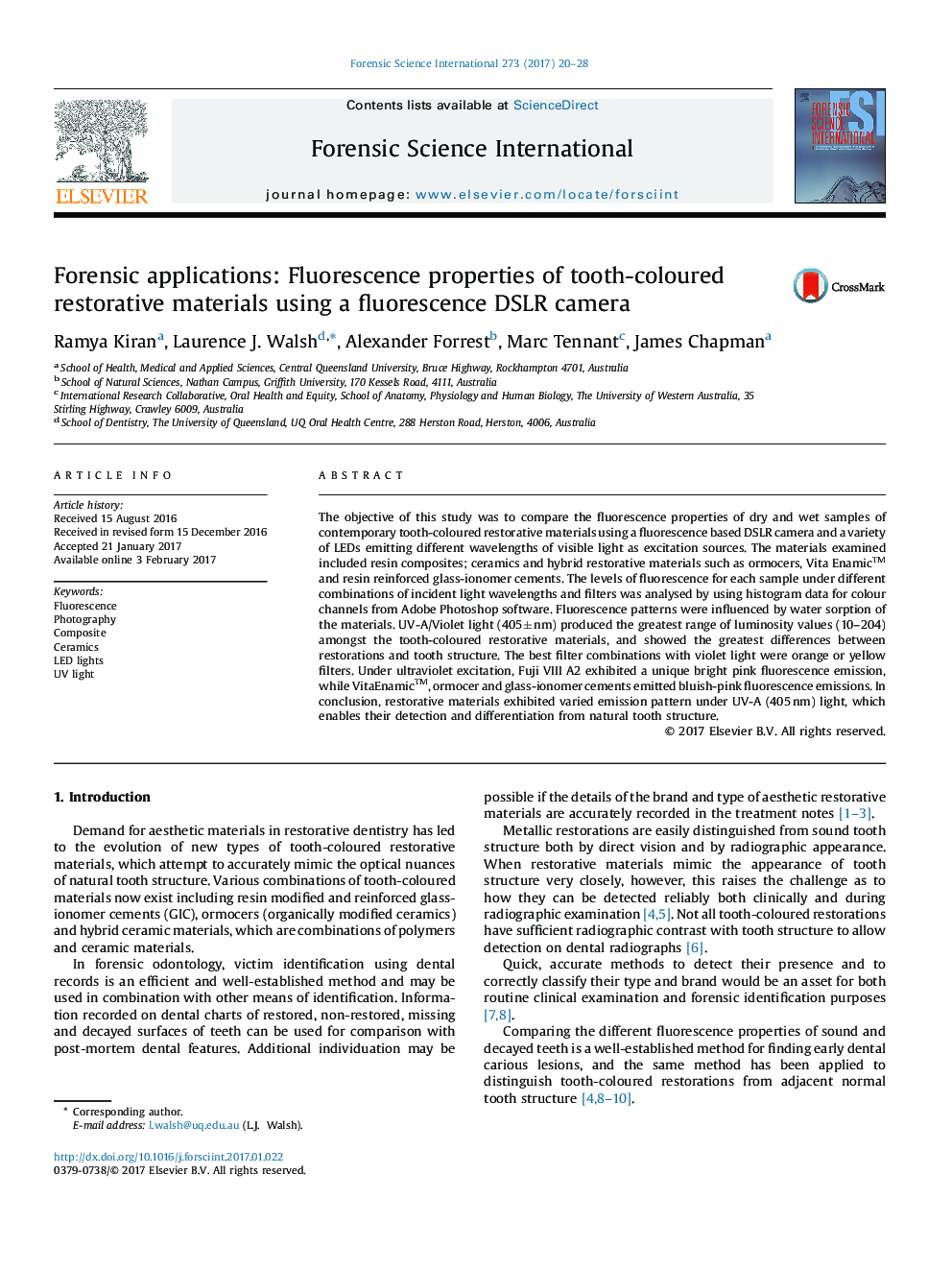| کد مقاله | کد نشریه | سال انتشار | مقاله انگلیسی | نسخه تمام متن |
|---|---|---|---|---|
| 4760327 | 1421977 | 2017 | 9 صفحه PDF | دانلود رایگان |

- Fluorescence-based photography is an adjunct to recognise tooth restorations.
- The method could be used in dental examination & forensic identification purposes.
- VitaEnamic, ormocers and glass-ionomer cements exhibit unique emission patterns.
- The intensity of fluorescence is influenced by hydration properties of the material.
The objective of this study was to compare the fluorescence properties of dry and wet samples of contemporary tooth-coloured restorative materials using a fluorescence based DSLR camera and a variety of LEDs emitting different wavelengths of visible light as excitation sources. The materials examined included resin composites; ceramics and hybrid restorative materials such as ormocers, Vita Enamic⢠and resin reinforced glass-ionomer cements. The levels of fluorescence for each sample under different combinations of incident light wavelengths and filters was analysed by using histogram data for colour channels from Adobe Photoshop software. Fluorescence patterns were influenced by water sorption of the materials. UV-A/Violet light (405± nm) produced the greatest range of luminosity values (10-204) amongst the tooth-coloured restorative materials, and showed the greatest differences between restorations and tooth structure. The best filter combinations with violet light were orange or yellow filters. Under ultraviolet excitation, Fuji VIII A2 exhibited a unique bright pink fluorescence emission, while VitaEnamicâ¢, ormocer and glass-ionomer cements emitted bluish-pink fluorescence emissions. In conclusion, restorative materials exhibited varied emission pattern under UV-A (405 nm) light, which enables their detection and differentiation from natural tooth structure.
Journal: Forensic Science International - Volume 273, April 2017, Pages 20-28